- Scanning Transitiometer: High-pressure calorimetry instrument enabling determination of both thermal and mechanical/physicochemical properties of the sample of different gases, liquids, and solids.
Device Specifications:
i) Range of Pressure Measurement: Vacuum – 500 MPa (with an accuracy of ~ 0.15%)
ii) Range of Temperature Measurement: 223 K – 623 K
iii) Sensitivity of Volume Change Measurement: 10-6 cm3

- Speed of sound measurements (pulse-echo method)
Device Specifications:
i) Type of sample: liquids
ii) volume of sample: 20cm3
iii)pressure range: 0.1 MPa – 400 MPa
iv)temperature range: -20oC – 150 oC
v)measurement uncertainties for the speed of sound: 0.5 m/s for pressure 0.1 MPa and 1.0 m/s at the high pressures.
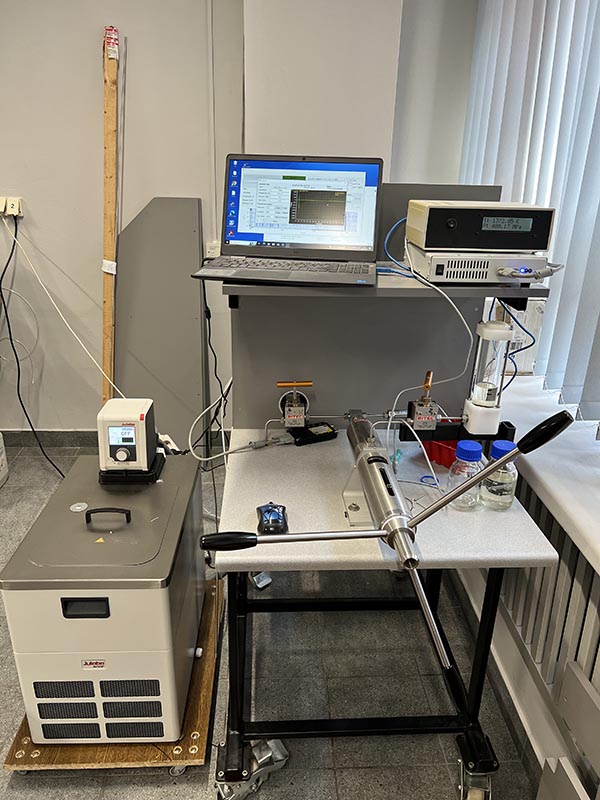
- KRÜSS DSA100 Drop Shape Analyzer: Optical Tensiometer enables a comprehensive analysis of solid-liquid interactions by measuring the contact angle of solid surface and surface tension of the single or mixture of liquid systems at varying temperature ranges.
Device Specifications:
i) Range of Temperature Measurement: -50 – 400 oC
ii) Resolution & Precision: 0.1 oC
iii) Accuracy: 1/3 DIN B (±0.1°C at 0°C to ±0.8 °C at 400 °C)
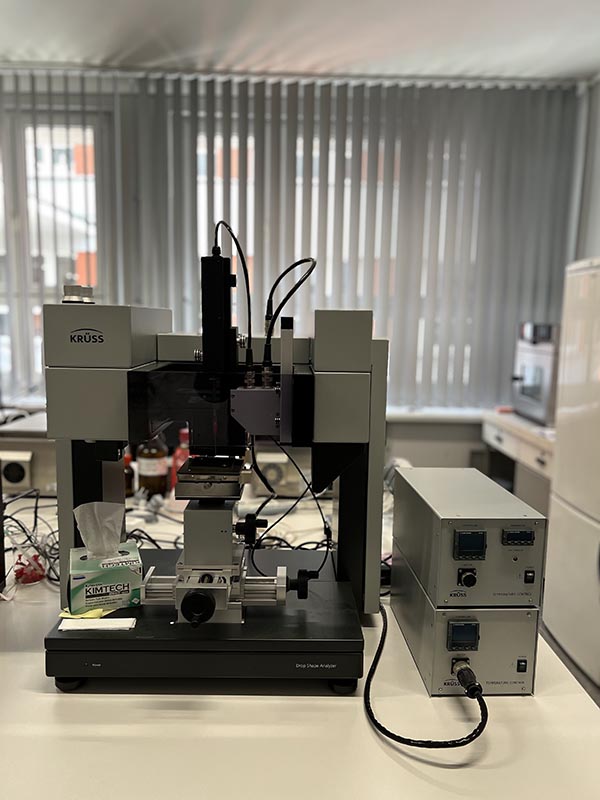
- High Pressure Variable Volume Chamber: A custom device designed for lab-based PVT studies enabling the measurement of the volume of the solid samples under constant pressure and (optional) temperature.
Device Specifications:
i) Range of Temperature Measurement: -50 – 400 oC
ii) Range of Pressure Measurement: 0 – 80 MPa
iii) Syringe Volume: 10 ml
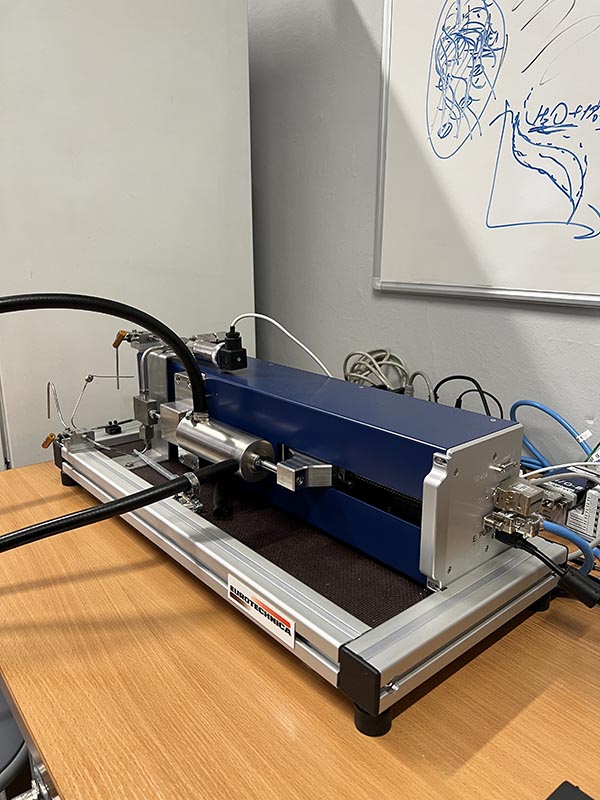
- Anton Paar DSA 5000 M Density and Speed Of Sound Meter: Instrumental device combining the density and sound velocity measurements in one setup. It is used for the concentration measurement of two- and three-component solutions. Also, it determines the concentration of sulfuric acid over the whole concentration range.
Device Specifications:
i) Range of Temperature Measurement: 0 – 100 oC
ii) Range of Density Measurement: 0 – 3 g/cm3
iii) Range of Sound Velocity Measurement: 1000 – 2000 m/s

- Anton Paar Lovis 2000 M/ME: Instrumental device used for measurement of dynamic viscosity, intrinsic viscosity, the molar mass of a polymer, and more.
Device Specifications:
i) Range of Temperature Measurement: 5 – 100 oC
ii) Range of Viscosity Measurement: 0.3 – 10,000 mPa.s
iii) Repeatability of Measurement: up to 0.1 %
IV) Accuracy of Measurement: up to 0.5%
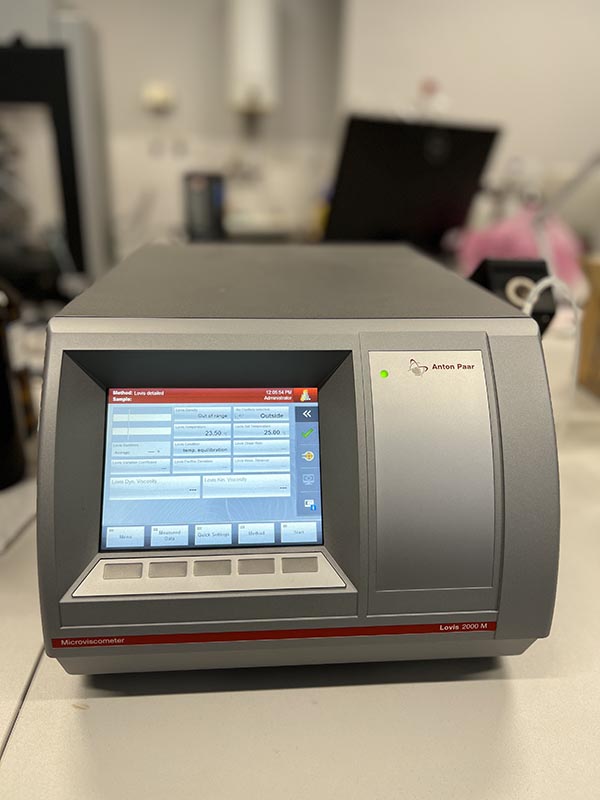
- Ossila Four-Point Probe: An easy-to-use instrument for the rapid measurement of sheet resistance, resistivity, and conductivity of materials.
i) Range of Voltage Measurement: ±100 μV to ±10 V
ii) Range of Current Measurement: ±1 μA to ±200 mA
iii) Sheet Resistance Range: 100 mΩ to 10 MΩ (ohms per square)
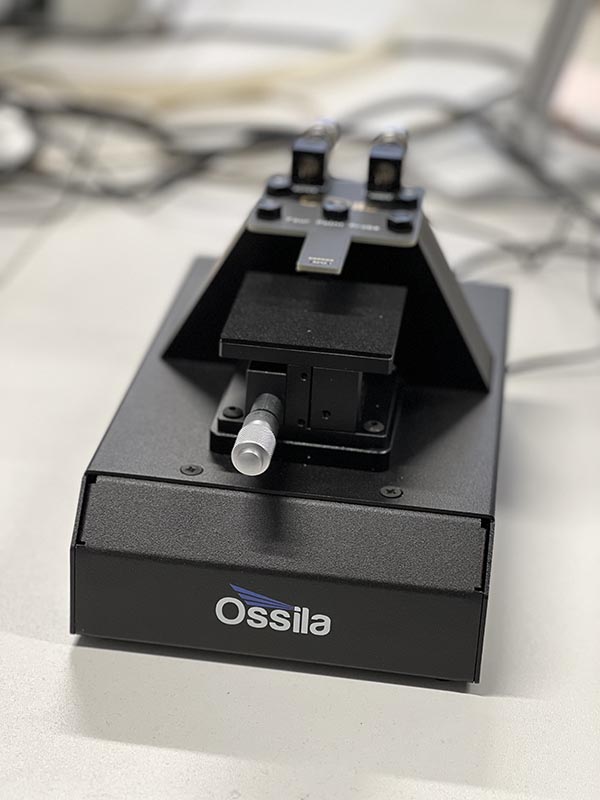
- NETZSCH LFA 467 HyperFlash: Instrumental analysis device used to measure thermal Conductivity and Diffusivity
Device Specifications:
i) Range of Temperature Measurement: -100 – 500 oC
ii) Range of Thermal Diffusivity: 0.01 mm2/s to 2000 mm2/s
iii) Range of Thermal Diffusivity: <0.1 W/(m*K) to 4000 W/(m*K)
iv) Sample dimensions: 6 mm to 25.4 mm in diameter, 0.01 mm to 6 mm in thickness

- Rigol HDO4204 oscilloscope: Electronic test instrument used to analyze voltage changes as a function of time. It is specifically useful to measure the triboelectrification phenomenon between liquid and solid interfaces.
Device Specifications:
i) Max Waveform Capture Rate500,000wfm/s.
ii) Record Length250Mpt
iii) Real Time Sampling Rate4GSa/s.
iv) 4 analog channels 12 Bit Vertical Resolution

- Seteram Calvet Calorimeter: This heat flux Calvet calorimeter can measure specific heat capacities and phase transitions of materials from local ambient temperature to 300 ֯C. It is equiped with two hastelloy measuring cells, for high temperatures.

- Nanosurfe Core AFM: AFM with Kelvin probe mode enables non-destructive measurement of a material’s surface topography and surface potential. It can also analyze surface topography and changes in the surface potential of materials before and after treatment.

